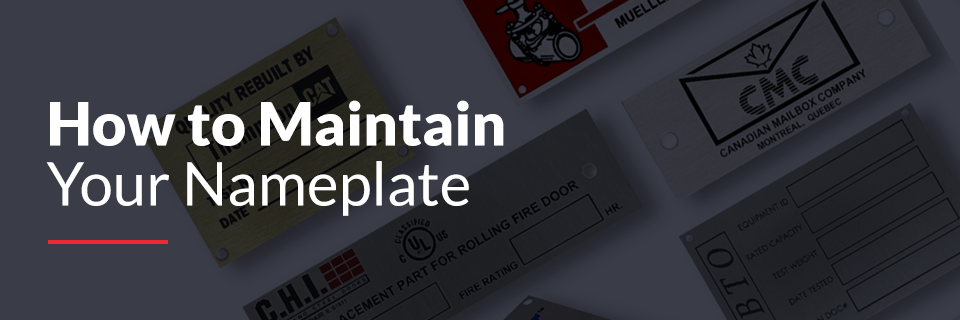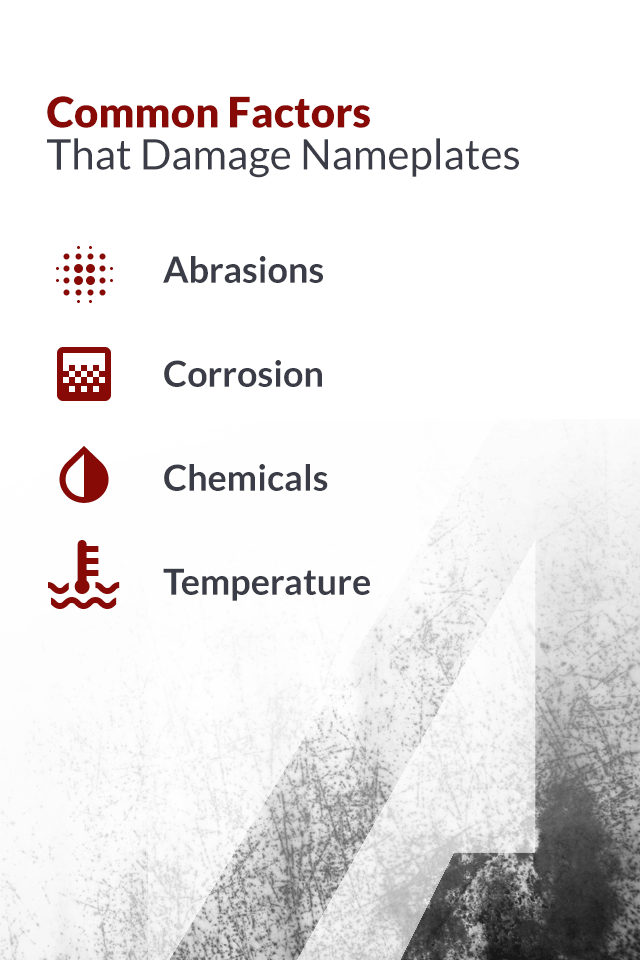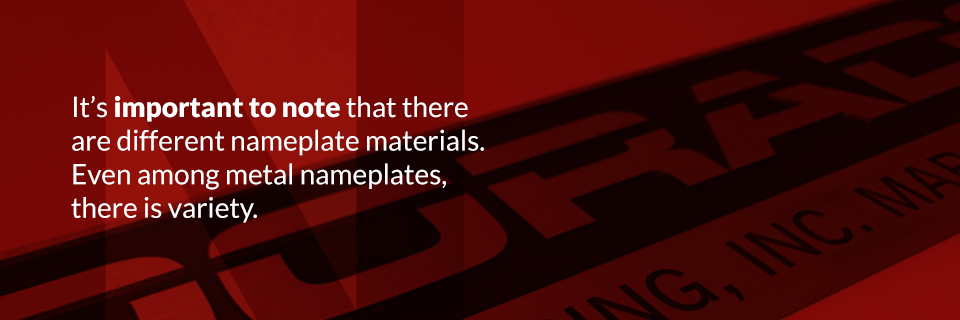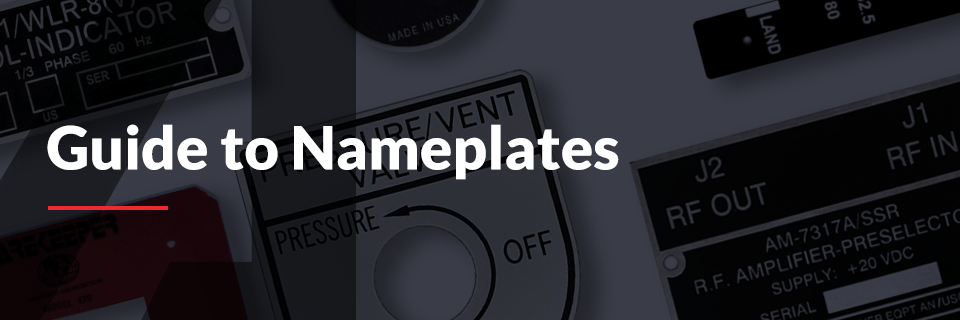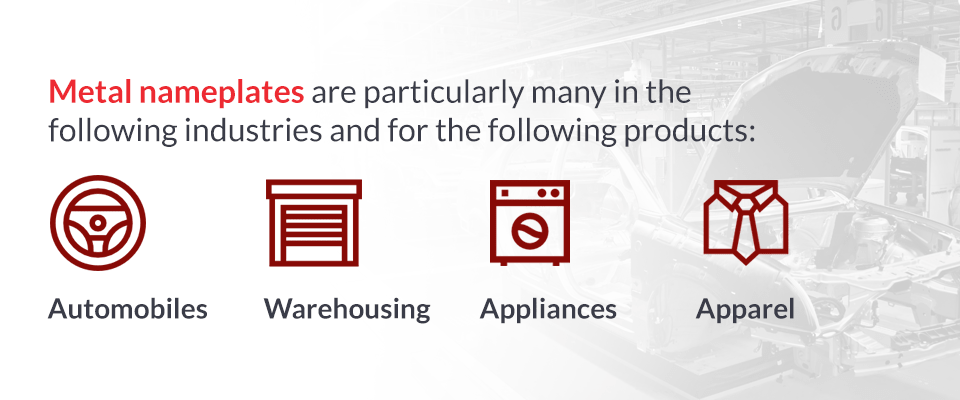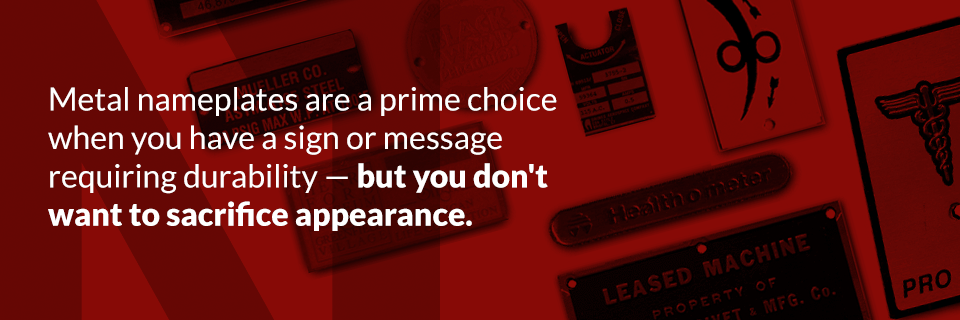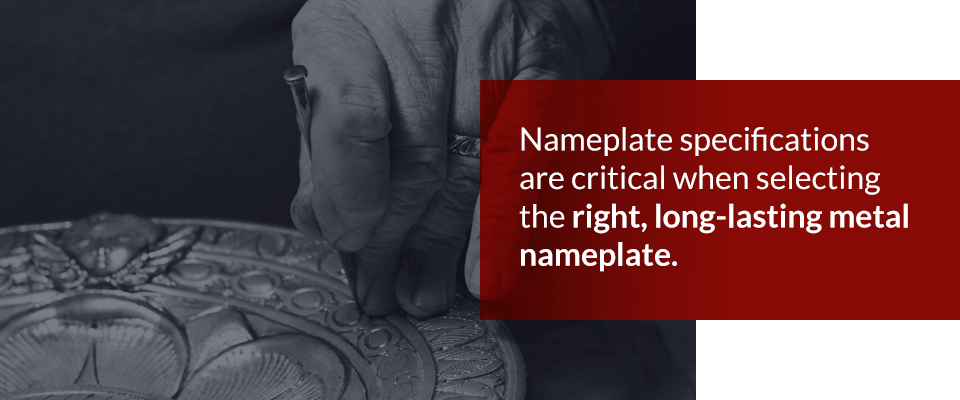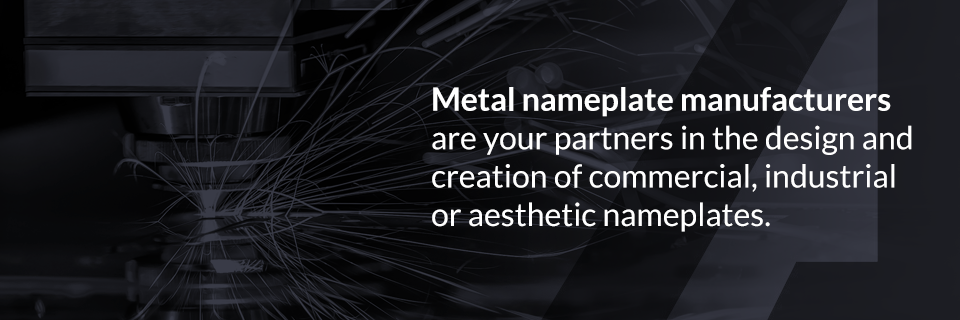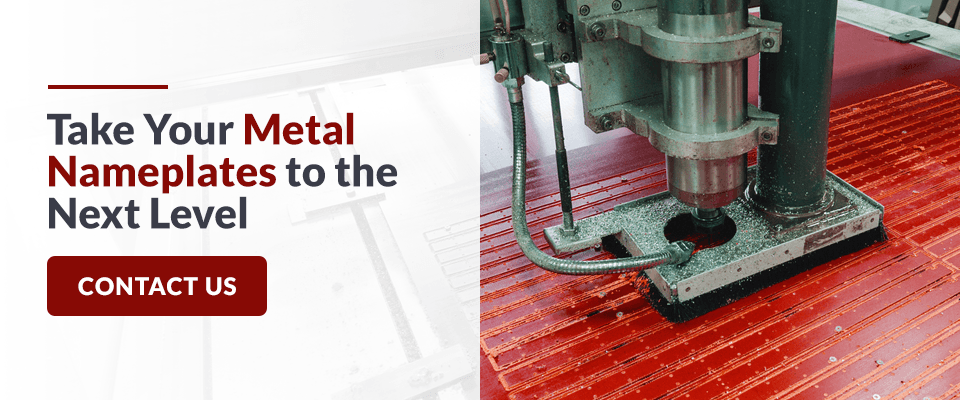Signs You Need to Update Your Nameplate
How to Know When to Update Your Nameplate
Your brand should be evident in your products and in all that you do, including your nameplates. If it’s been a while since you last looked at your nameplates or your company has recently undergone significant changes, these could be signs you need an upgrade. Stay ahead of the competition by watching out for these common reasons you should change your nameplate.
1. You Changed Your Logo
Consistent corporate branding is necessary to generate company recognition. Everything from your email signatures to your store displays should feature an easily recognized logo. Whether you changed your font style or colors or completely redesigned your logo, you should update your nameplate to match this new theme. American Nameplate can use chemical etching, screen printing, and even stamping or embossing processes to revise your nameplates to reflect a logo change.
2. Your Company Merged With Another
Another reason to change your nameplate is if your company recently merged with another. Similar to a logo change, a merger will typically result in updated branding. As you start reviewing your products, take some time to look at your industrial labels as well so that the entire product reflects the branding change.
3. You Expanded Your Product Line
Expanding your company to offer more products is an exciting time, and it’s also a way to know your nameplate needs a makeover. Your nameplates’ current design may not work for additional product models. You may need to add a new model or product numbers, manufacturing dates, and additional safety information. It’s a good idea to check for any changes you should make, then build off your existing design to create a nameplate update that better fits your new products.
4. Your Product Changed
Likewise, you’ll know when to update your industrial labels if your product has changed. Maybe you haven’t released a particular product to the market in a while, or you’re upgrading some well-known merchandise with additional features. You can enhance your brand awareness by redesigning your nameplate to reflect these changes.
5. Your Competitors Updated Their Nameplates
Most companies are in tune with what their competitors are doing, including a change to their branding. If you notice that your competitors’ nameplates are more recognizable than yours, then you will know it’s time to update your industrial labels. Take a hard look at how your branding and messaging compares to your competitors, and work to catch up if you’re behind. Our nameplate specialists can help you stay up to date with the market and walk you through the best eye-catching nameplates or labels in the industry today.
Redesign Your Nameplate Today
When you notice signs you need to update your nameplate, don’t wait. American Nameplate is an industry leader with one of the fastest turnaround times in the nameplate business. We’ll work with you to create custom nameplates that will wow your customers and make your products stand out.
Contact us today to learn more about when to redesign your nameplate.





